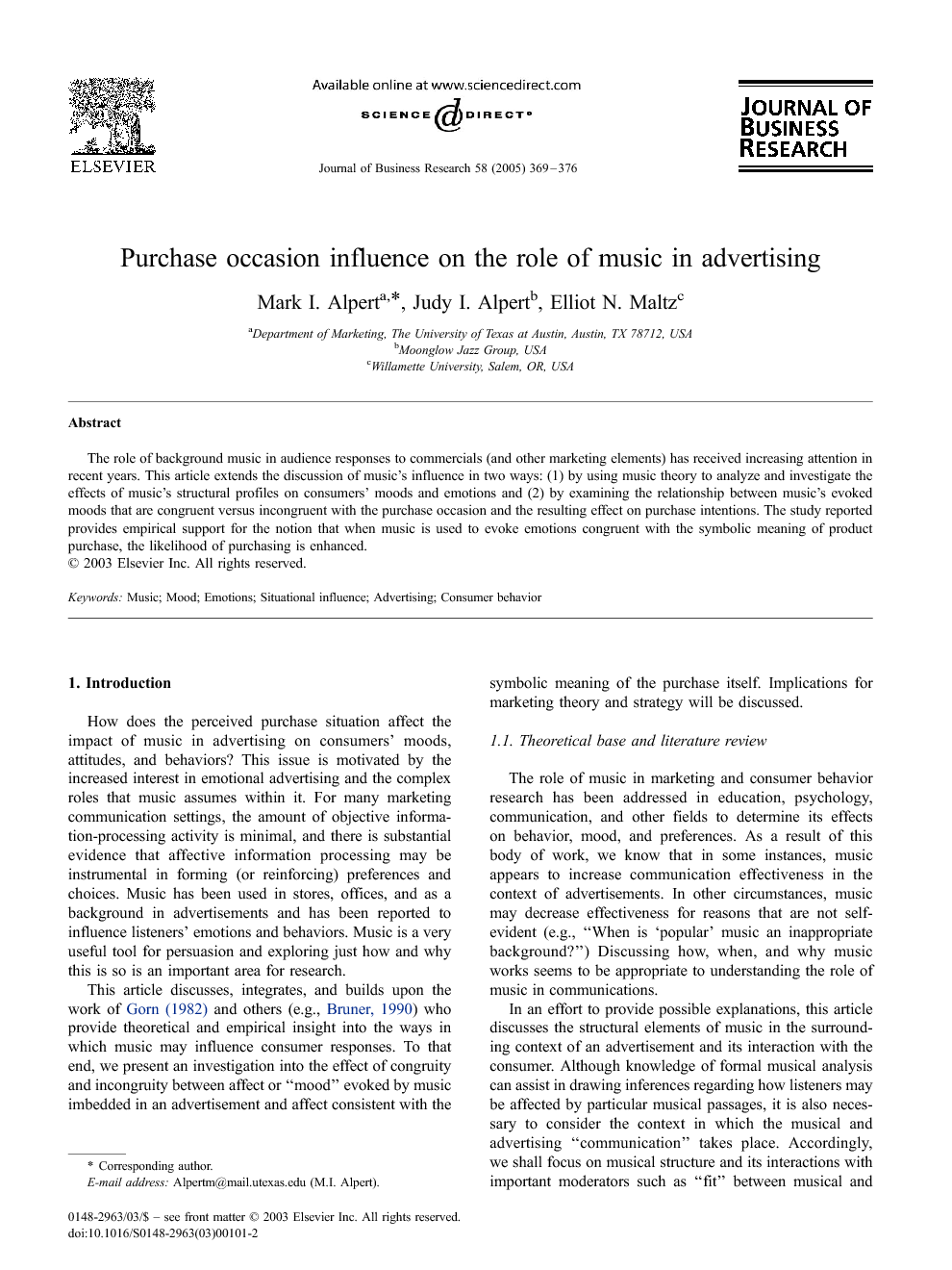ترجمه فارسی عنوان مقاله
تاثیر مناسبت خرید بر نقش موسیقی در تبلیغات
عنوان انگلیسی
Purchase occasion influence on the role of music in advertising
| کد مقاله | سال انتشار | تعداد صفحات مقاله انگلیسی |
|---|---|---|
| 2054 | 2005 | 8 صفحه PDF |
منبع

Publisher : Elsevier - Science Direct (الزویر - ساینس دایرکت)
Journal : Journal of Business Research, Volume 58, Issue 3, March 2005, Pages 369–376
ترجمه کلمات کلیدی
موسیقی - حالت - احساسات - تاثیر موقعیتی - تبلیغات - رفتار مصرف کننده -
کلمات کلیدی انگلیسی
Music,Mood,Emotions,Situational influence,Advertising,Consumer behavior,

